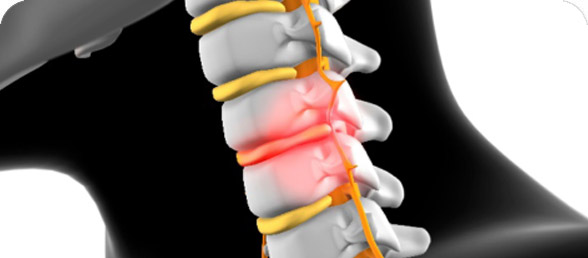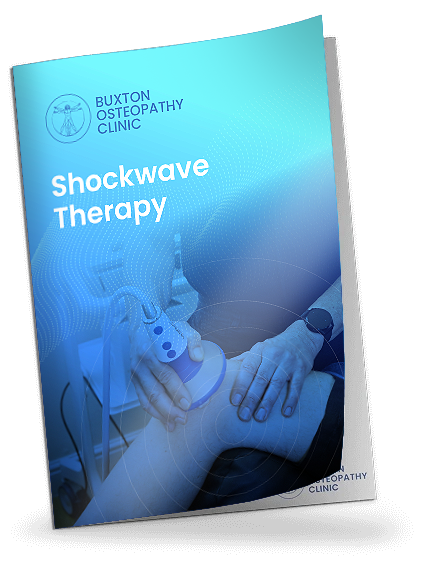Want to know how a T-Rex is connected to osteoarthritis? This week we discuss the most common form of joint disease and its main causes.

Over the next few weeks, I am writing a series of articles on osteoarthritis.
Osteoarthritis deservedly has a high profile, so much so that it has its own Awareness Month (May) and Global Arthritis Awareness Day (October). There are more than 100 different forms of arthritis and related diseases. The most common types include osteoarthritis (OA), rheumatoid arthritis (RA), psoriatic arthritis (PsA) and gout (for more information click on this link).
Osteoarthritis specifically is the most common form of joint disease, affecting at least eight million people in the UK. It can affect any joint, but it most commonly affects the knees, hips, neck and back, toes and fingers.
Arthritis has an impact on people of all ages and has afflicted us since ancient times. In fact, it just depends on how far back you want to go as fossil records even show evidence that some forms of arthritis affected dinosaurs! Unambiguous evidence of this is given in Bruce Rothschild’s book entitled ‘The Complete Dinosaur’ published in 1999. This book was described at the time as ‘stimulating armchair company for cold winter evenings’! Within it, it presents proof that even the mighty Tyrannosaurus Rex suffered from gout! Not surprising as this is promoted by uric acid, resulting from purines which are in high concentrations in meat. Hard to avoid if you are the ultimate carnivorous apex predator of all time!
Ironically a Tyrannosaurus Rex was what we call digitigrade (they walk on their toes) whereas we are plantigrade (we walk with our entire foot on the ground) which is biomechanically far less efficient. Our Tyrannosaurus Rex was therefore much more unlikely to suffer from osteoarthritis in hip and knee joints. Their modern-day descendants, birds, employ the same strategy and in terms of an evolutionary strategy it is much superior to ours; I detailed an argument for this last year in a previous article.
Meanwhile 65 million years later on, moving on from our gout ridden Tyrannosaur, one of the earliest known texts describing rheumatoid arthritis was written in 1715 by William Musgrave called the ‘De Arthritide Symptomatica’. So, here we are back in the present!
Epidemiology of Osteoarthritis
It is difficult to accurately determine how many people specifically have arthritis in the UK as this data is often recorded and bundled as a general musculoskeletal condition (or MSK). Despite this there is some data currently available if you look carefully. The Global Burden of Disease Study (GBD) is the most comprehensive worldwide observational epidemiological study to date. It describes mortality and morbidity from all major diseases, injuries and risk factors to health at global, national and regional levels. These studies suggest that an estimated 8.3 million men and 10.5 million women suffer from MSK associated diseases in the UK and this is further segmented to Wales, England, Ireland, and Scotland.

The total cost of the OA to the UK economy is estimated at 1% of annual gross national product. Estimates suggest that 36 million working days are lost because of it, costing the economy nearly £3.2 billion in lost production.
Osteoarthritis represents a massive burden on the NHS. In 2010, OA was singularly responsible for 3 million GP consultations and 115,000 hospital admissions in the UK. It is likely that OA represents a major proportion of referrals to us as Osteopaths and also physiotherapists, rheumatologists and orthopaedic surgeons. Perhaps this is the tip of iceberg as research also suggests many people with OA never consult a doctor. The reasons for this are unclear but may be related to people feeling that ‘nothing can be done’ or that joint pain must be accepted as part of ageing.
There are several key reasons for the occurrence of OA with one of the most current being obesity. One in six of us in the UK over the age of 16 years old are obese. This in particular leads to heavier wear in our major weight-bearing joints.
Obesity and Osteoarthritis
It is a sobering fact that around one in four adults (16+) in the UK do less than 30 minutes of physical activity per week (inactive). Clearly sometimes people have little choice because of pre-existing co-morbidities or perhaps even time constraints. Whatever the reason there is no doubt that obesity directly damages weight-bearing joints such as knees and hips because of the abnormally high loads they must carry.
The net effect of each additional kilogram in body weight is multiplied by 2kg or 3kg times at the knee joint. This is in part due to the kinetics of acceleration as we walk or run and simultaneous contraction of multiple muscles. Malalignment of the lower extremity due to other traumas, which leads to overloading of one compartment in the knee at the expense of another, is also associated with progression of osteoarthritis. This is something we spend time looking at in our clinic.

There is no treatment for osteoarthritis. The disease is managed with pain relief and often culminates in joint replacement surgery, which, although outcomes are improving, in some cases has variable outcomes.
By the age of 50 years old roughly 15% of us have some degree of knee pain, increasing to 25% by the time we are 60 years old. In the UK there are about 70,000 knee replacements each year, according to NHS statistics, and this currently is rising by 8% per annum (average age of 70-year-old). If we include hip replacements this figure rises to approximately 160,000 procedures.
Osteoarthritis: Research into Genetics
Another key issue in the evolution of OA is unfortunately our genetics. In 2018 the Wellcome Sanger Institute in Cambridge undertook the largest study of its kind to see if it could identify genes involved in OA. The team studied 30,727 people with OA and almost 300,000 people without OA who acted as controls. In total this implied studying 16.5 million DNA variations.
The team looked for genes that were active in the progression of the disease by extracting the relevant cells from healthy and diseased tissue, studying the levels of proteins in the tissue and sequencing the RNA — the messenger that carries instructions from DNA for controlling the production of proteins. They eventually discovered nine new genes that were associated with OA. They then investigated the role of these nine new genes, by studying both normal cartilage and diseased cartilage from individuals who had a joint replacement.
Of these nine genes, five genes in particular differed significantly in their expression in healthy and diseased tissue. These five genes especially present novel targets for future research into therapies. One of the key authors stated: “These results are an important step towards understanding the genetic causes of osteoarthritis and take us closer to uncovering the mechanism behind the disease. Once we know that, it opens the door to developing new therapies for this debilitating disease.”
What was also interesting is that the team also explored genetic correlations between osteoarthritis and obesity, bone mineral density, type 2 diabetes, and raised blood lipid levels. Within the limits of their study, they discovered that type 2 diabetes and high levels of lipids in the blood do not have causal effects on osteoarthritis, but they did reaffirm that obesity does have an effect. Dr Natalie Carter from Arthritis Research UK commented on the study. “The discovery of these genes is positive news for the 8.5 million people in the UK living with osteoarthritis. People living with this debilitating condition currently have limited treatment options. Meanwhile, they can struggle to do the day-to-day things most of us take for granted, like going to work or getting dressed independently. By revealing how these genes contribute to osteoarthritis, this research could open the door for new treatments to help millions of people live the pain-free life they deserve.”






